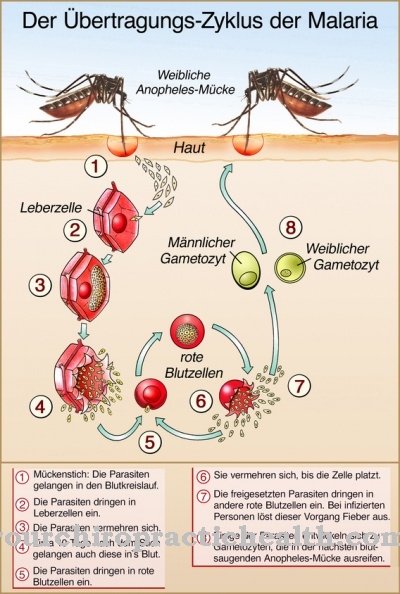Bacillus cereus is a gram-positive rod bacterium from the genus Bacillus and the order Bacillales, belonging to the class Bacilli and family Bacillaceae of the Firmicutes division. The bacterium occurs ubiquitously in the environment and is ingested with raw materials or food in the form of germs. In spoiled foods with a high protein content, there are over 1000 individuals of the species per gram, so that the consumer can expect food poisoning.
What is Bacillus Cereus?
Bacillus is a genus of rod bacteria that includes over 200 species with gram-positive coloring behavior. Within the Bacteria domain, the genus belongs to the Firmicutes division, the Bacilli class and the Bacillales order, to which it belongs to the Bacillaceae family.
Many species from the bacterial genus are capable of active locomotion and therefore carry so-called pili. One of these actively motile bacteria is the species Bacillus cereus. Together with other species, the bacterial species forms the so-called Bacillus cereus group. The individual representatives are characterized by a genetically close relationship. Their common core genome consists of over 3000 genes.
Bacillus cereus is considered an opportunistic pathogen and is therefore pathogenic to humans under certain conditions. The human pathogenicity of the bacterial species is primarily related to the toxins they produce. As soon as an above-average number of Bacillus cereus toxins arise in the digestive tract, typical symptoms of poisoning appear. In immunologically weakened people, even small amounts of toxin are sufficient to develop symptoms of poisoning.
Occurrence, Distribution & Properties
Bacillus cereus is ubiquitous in the environment and is found in the raw materials of numerous foods in addition to the soil. The bacterial species also occurs in relatively high concentrations in natural soil and occurs in a number of individuals of around one million per gram of soil sample. The species Bacillus cereus is one of the most common types of soil bacteria.
The individuals form spores that are extremely resistant to temperature and other influences. For this reason, the processing of individual raw materials cannot harm them any more than the boiling of the food. The species enjoys optimal culture conditions in a temperature range of 28 to 35 degrees Celsius.
Individual strains of Bacillus cereus are sensitive to acids. The species metabolic pathway is facultatively anaerobic. This means that the bacteria metabolize without oxygen and can survive in a low-oxygen environment. In this case, they resort to substances other than O2 and metabolize them for growth and energy production purposes. If oxygen is available, however, they can operate their metabolism with oxygen.
The bacteria have the enzyme catalase, which can convert H2O2 into O2 and H2O. This enables them to produce oxygen and water from hydrogen peroxide.
Since the bacteria are ubiquitous in the environment, a small amount of them is also found in the human body. This is especially true for the gastrointestinal tract of humans, since the bacteria are absorbed with all raw materials. In small quantities, the bacterial species is not human pathogenic for people of normal constitution.
The bacteria produce a so-called enterotoxin through their metabolic pathways. These toxins, in higher amounts, have an effect on the gastrointestinal tract. The number of Bacillus cereus germs in spoiled raw materials, and thus the amount of enterotoxins produced, is usually far above the human tolerance threshold.
Illnesses & ailments
Enterotoxins are cytotoxic proteins that can cause pore formation in the cell membrane and thus change the permeability of epithelial cells of the intestinal mucosa or even induce cell death in the area of the intestinal epithelium. The failure of epithelial cells manifests itself in a loss of function of the physiological mucous membrane barrier of the intestine. Fluid and electrolytes are lost.
The damage caused by enterotoxins manifests itself clinically in the form of diarrhea. Bacillus cereus can occur in spoiled food in such a large number of germs that typical symptoms of food poisoning occur. Bacteria counts of over 1,000 individuals per gram of food cause symptoms in people of normal constitution. With such a high level of infestation, the food usually tastes unpleasant because large amounts of protease can be detected in it.
The symptoms of food poisoning from enterotoxins include diarrhea, nausea, vomiting, and stomach cramps, as well as abdominal pain. The highest risk of high exposure to Bacillus cereus is for protein-rich foods such as fish, meat, dairy and egg products. These products offer bacteria of the species an ideal nutritional basis and can thus lead to a strong multiplication of them.
People with constitutionally stressful previous illnesses and a correspondingly weakened immune system can withstand far fewer enterotoxins before they develop symptoms of poisoning. This makes them generally more susceptible to food poisoning than the average.
In addition to illnesses and immunosuppressants, mental stress can also weaken the immune system. Older people also generally have a weaker immune system than younger people. Even small children are often immune to limited immunological resistance. This means that seniors and young children are affected by food poisoning by toxins of the bacterial species Bacillus cereus much more frequently than adolescents and adults.
Various measures are available to prevent food poisoning from the pathogen. On the one hand, good kitchen hygiene is essential. On the other hand, food that is easily spoiled should also not be eaten. Since the germs of Bacillus cereus have proven to be resistant to heat, boiling the food does not help against food poisoning.















.jpg)



.jpg)

.jpg)




